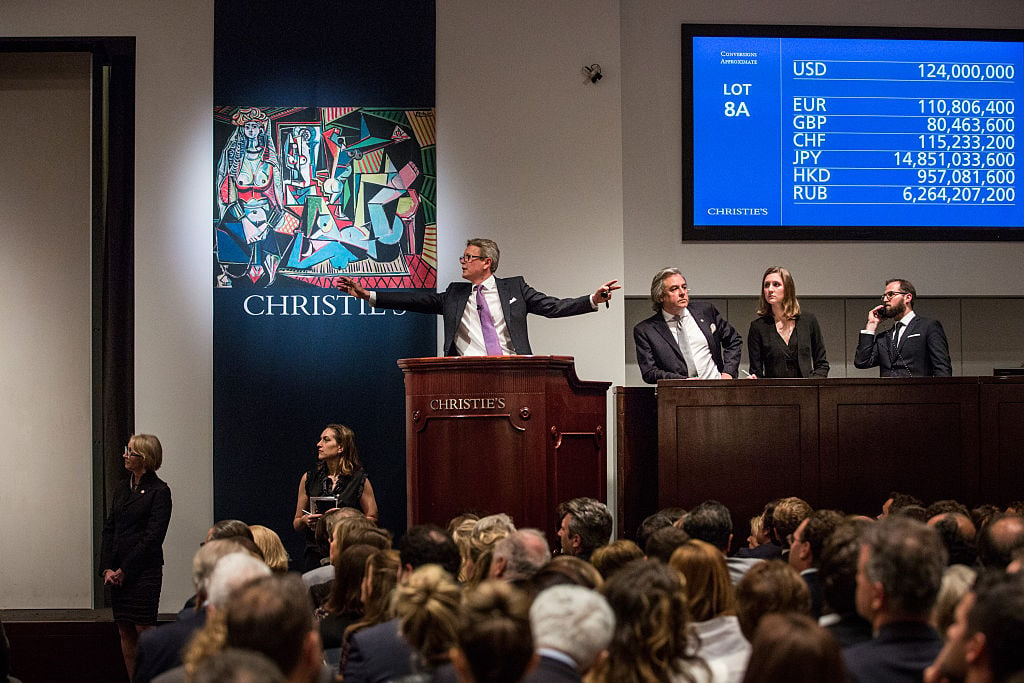Analysis
In a thriving international art business, there was a marked shift to private transactions.

Global art sales went up, auction houses got squeezed, and Asian bidders took home an increasingly large piece of the art-market pie.
That, at least, is the high-level takeaway from the TEFAF 2017 Global Art Market Report, which will be released on Monday to chart the health of the global art market in 2016.
This year, as buyers and sellers alike are hungry for data to guide them through a new and uncertain global economic moment, the TEFAF report is likely to be more closely read than usual.
Its release, on the eve of the major annual European Fine Art Fair (TEFAF) in Maastricht in the Netherlands, is an annual tradition in which the fair’s organizers release a comprehensive report that includes detailed findings and analysis of the previous year’s sales activities in the art industry.
The summary relies on a combination of auction data supplied by the artnet Price Database, a partner on the report, as well as extensive surveys of private art dealers, import and export data, and analysis of import/export trade statistics and art-related businesses around the world, such as looking at the total number of dealer and gallery staff employed on a country-by-country basis.
The report was prepared by Professor Rachel A. J. Pownall, who holds the TEFAF chair in art market at the School of Business Economics at Maastricht University. Pownall also holds the Van Gogh Chair on Art Finance and Museum Management at TIAS School for Business and Society in the Netherlands.
“A wide variety of data sources have been collected and analysed for this report,” wrote Pownall, adding that it is “primarily based from art dealers and experts in the art trade. The data have been gathered and analysed by Maastricht University.”
In a foreword to the latest report, artnet CEO Jacob Pabst noted that artnet has partnered with TEFAF for more than a decade, and said that the annual TEFAF report is “widely regarded as the most comprehensive summary of the art market,” noting that it offers “collectors, professionals, and art lovers a global perspective on economic trends in the art market.”
Here are some key takeaways from the latest edition:
– Total global sales of art in 2016 were $45 billion, a 1.7 percent increase on the comparable figure Pownall cites for 2015.
– The report paints a picture of “a stable and resilient market, experiencing positive growth.” However, sales are moving away from the auction houses to the private sector, both to private sales by auction houses and to dealers. In 2016, public auction sales of works of art, high-end jewelry, and decorative arts, reached $16.9 billion globally, a drop from $20.8 billion in 2015.
– Despite a nearly percent 19-percent drop by dollar-value of art and antiques sold at auction, prices on an aggregate basis have not fallen as far, and are, by contrast, down 8.6 percent. The report notes a drop in prices of Modern art sold at auction in the U.S. and Europe. Meanwhile contemporary art prices at auction in those region are about 4 percent higher.
– The Asian auction market remained buoyant in 2016, despite that auction sales are down 1.6 percent and China is down 2.6 percent. Asia now accounts for a 40.5 percent share of world auction sales, up from a 31 percent share in 2015. China dominates auction sales with almost 90 percent share.
– Perhaps not surprisingly, art fairs, both global and local, “are the most important point for acquiring new buyers, which is the largest concern of art dealers and galleries reporting to our annual survey.”
Follow Artnet News on Facebook:
Want to stay ahead of the art world? Subscribe to our newsletter to get the breaking news, eye-opening interviews, and incisive critical takes that drive the conversation forward.

